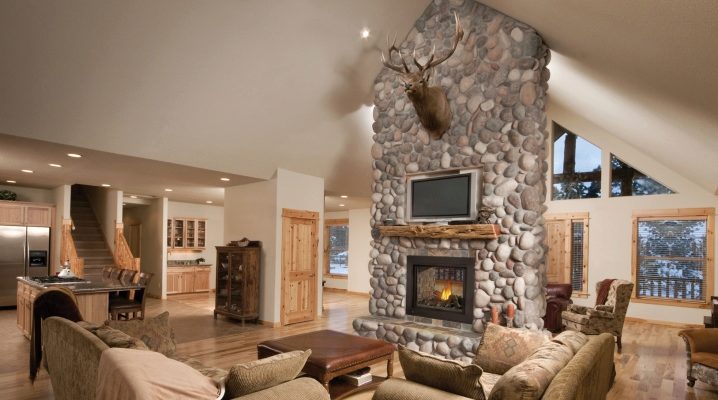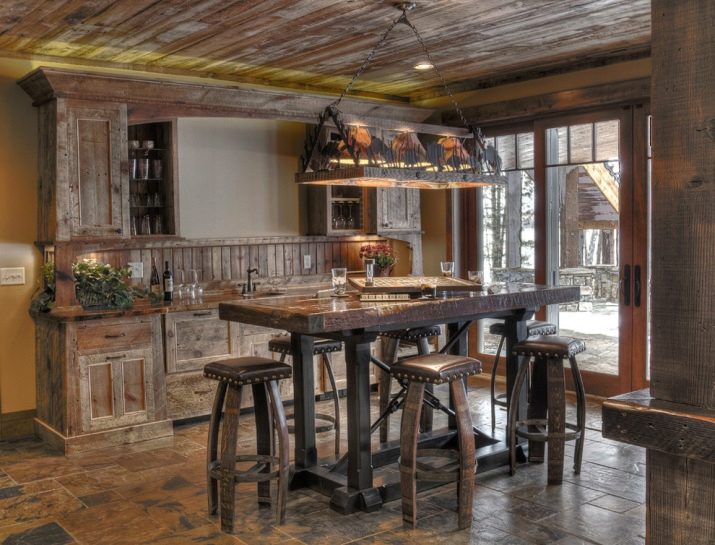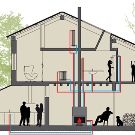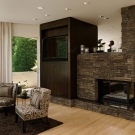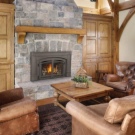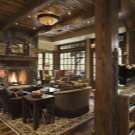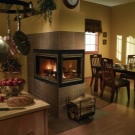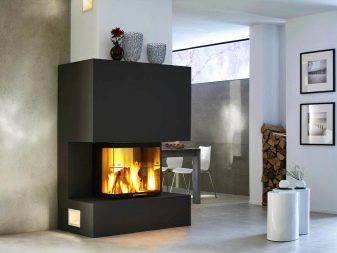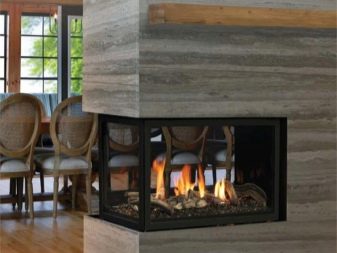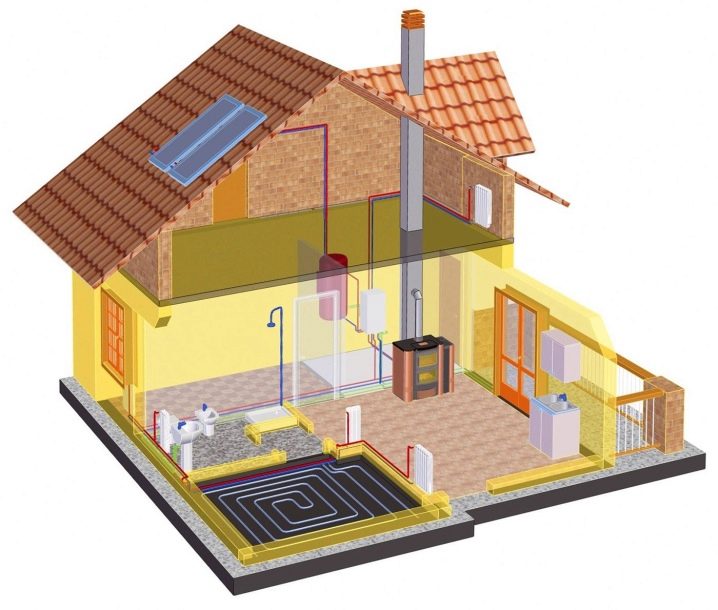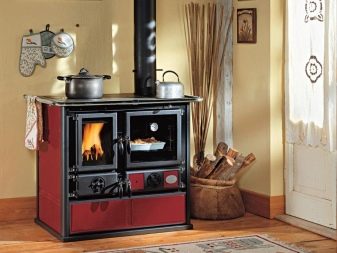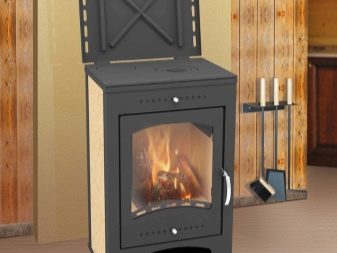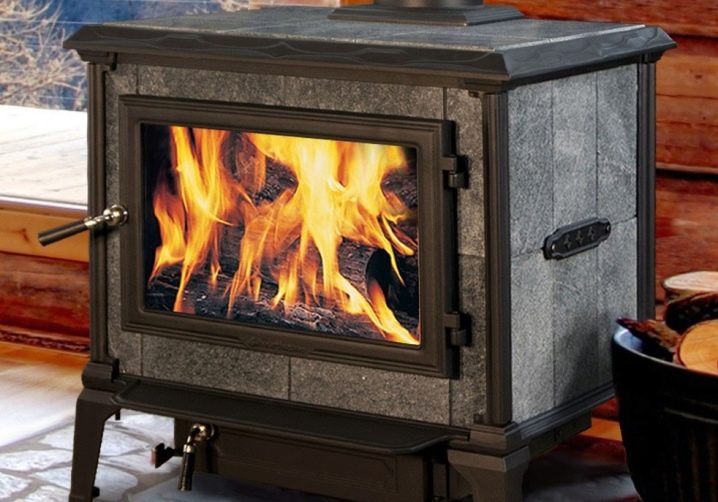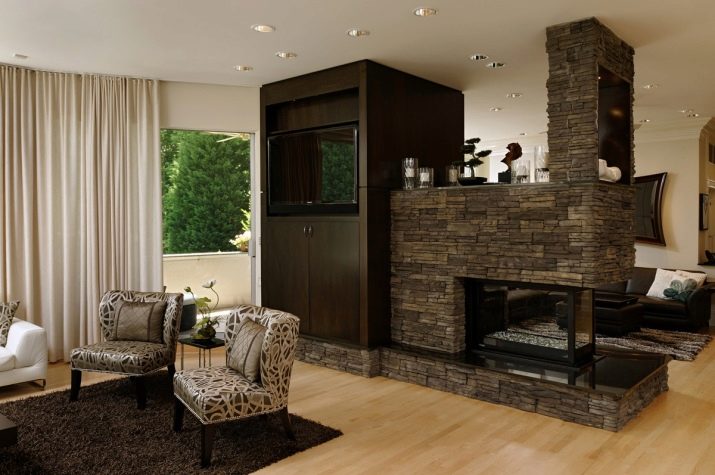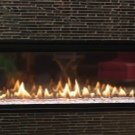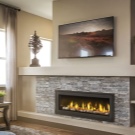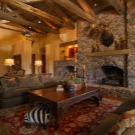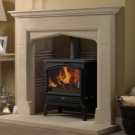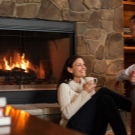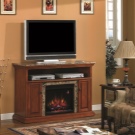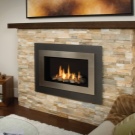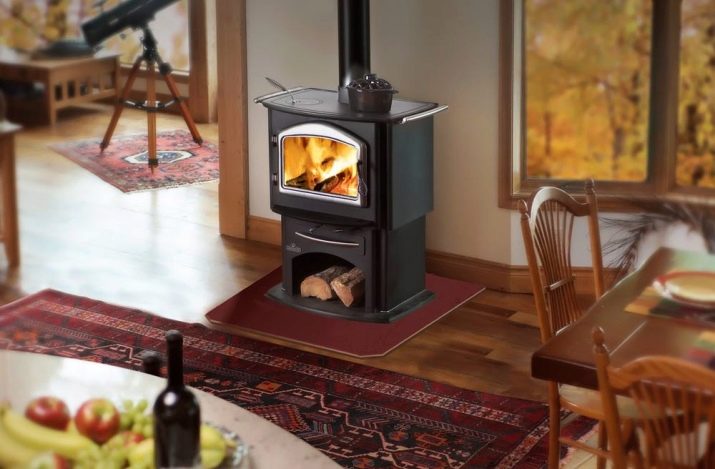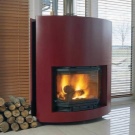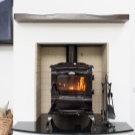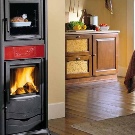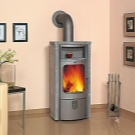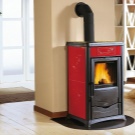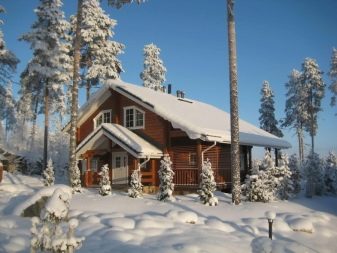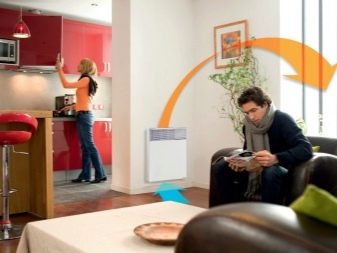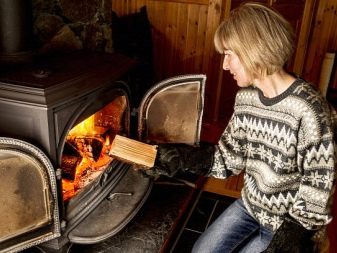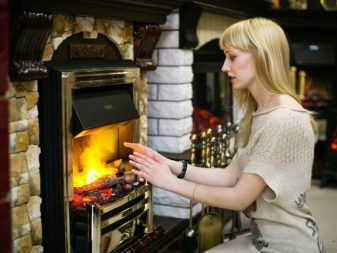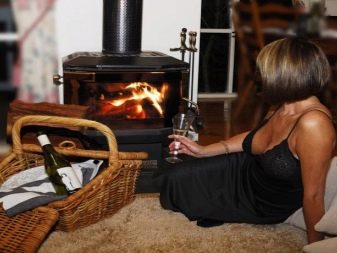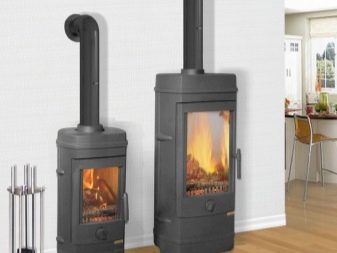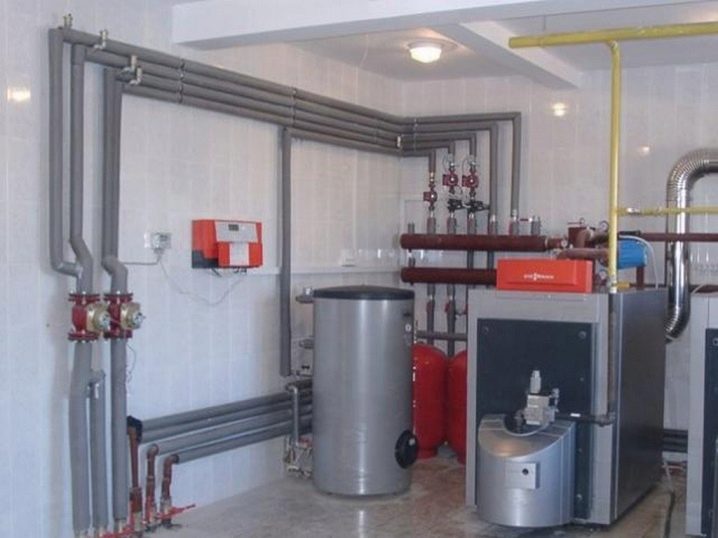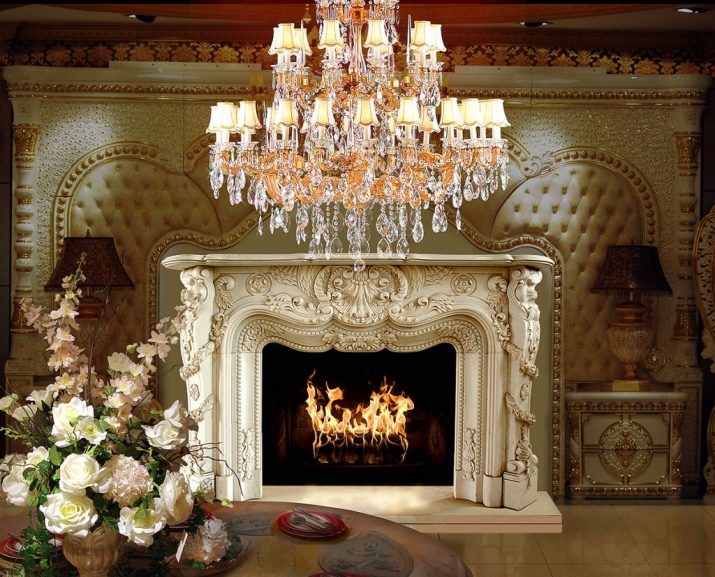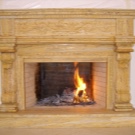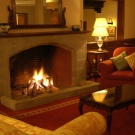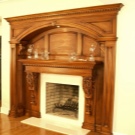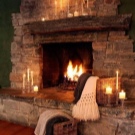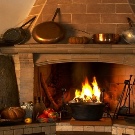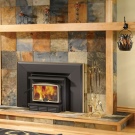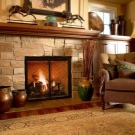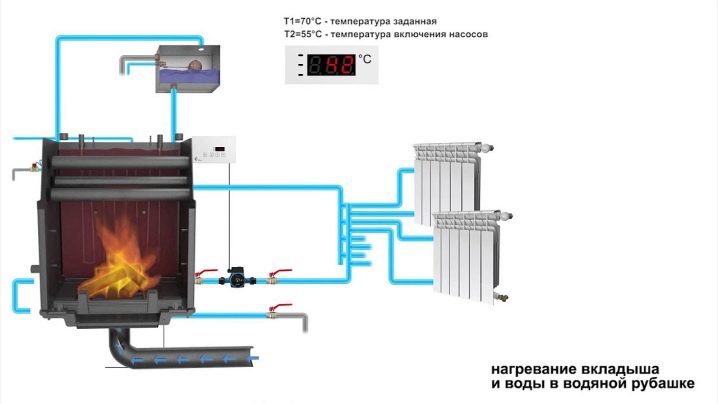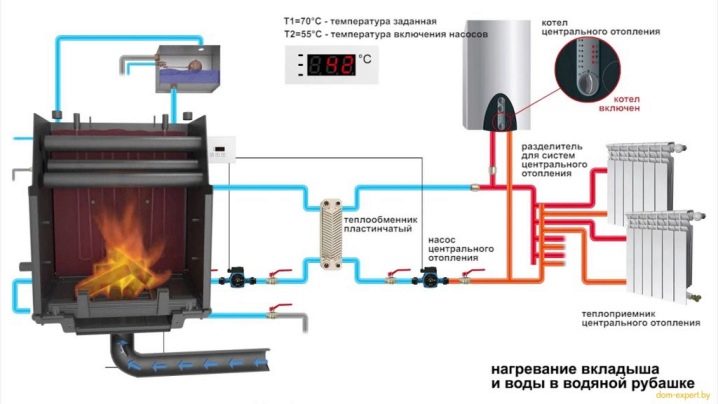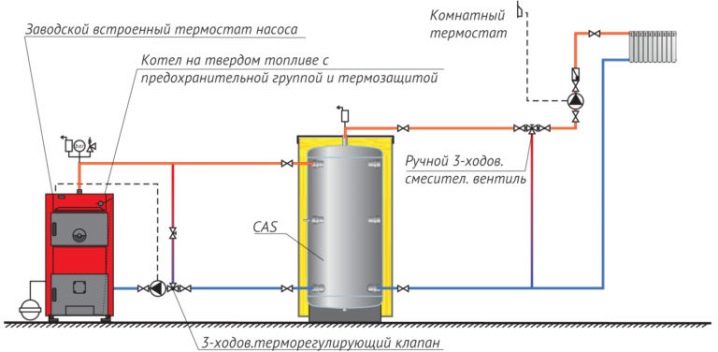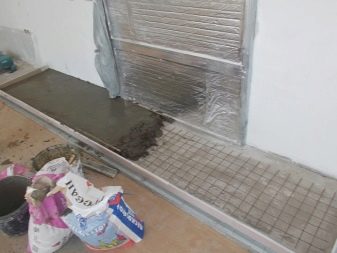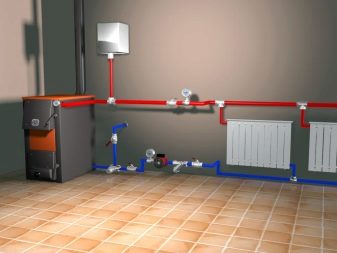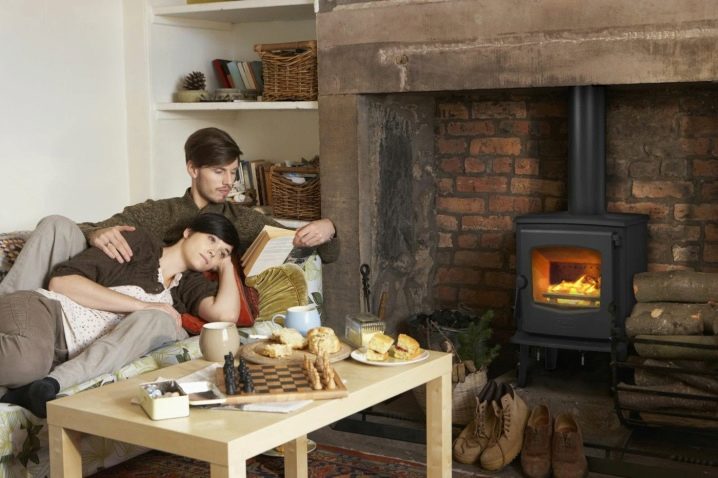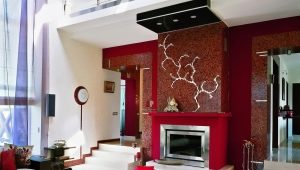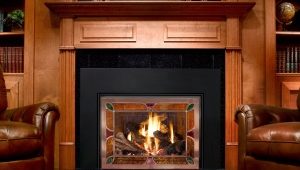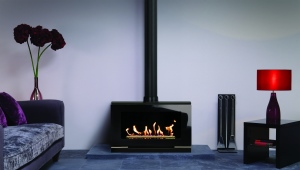Fireplace with water heating
Device and principle of operation
A fireplace with water heating can simultaneously heat several rooms in a house of about 100 m2and in some cases also serve as floor heating and cooking in the house. Usually it is a firebox connected by pipes to the expansion tank and the water distribution circuit of the house heating to supply hot water to it. Exhaust gases when burning fuel in the fireplace heats the tank and the water in it up to 90ºС. Hot water enters the radiators, heating the room.
Another name for this type of device is a fireplace with a water jacket, because structurally the water can be heated by passing through a coil located in a shirt of two metal sheets behind the wall of the firebox.
Advantages and disadvantages
The main advantages of a fireplace with water heating
- increased area for space heating. At the expense of a well-designed water-heating circuit, such devices allow to warm several rooms or a whole country house at once.Even furnaces of this type have been developed for apartment buildings.
- multifunctionality. In addition to aesthetics and the direct task of heating the room, a water fireplace can heat the hob and thus serve as cooking in the house. It can also be a source of "warm floors" in the house.
- low cost of fuel. The fuel used in such fireplaces is mainly firewood or peat. The fireplace system is completely autonomous and does not require additional costs of electric or any other energy.
- beautiful appearance and the possibility of using any facing materials. Whatever the decoration of your fireplace - made of brick, tile or stone - it will attract admiring glances of guests;
- compact size of the fireplace, making it suitable for an apartment.
disadvantages
Despite the impressive list of advantages, fireplaces with water heating have several disadvantages:
- low efficiency of water heating. Hot in the house from such a fireplace just will not. The more extensive heating network is installed in the house, the lower will be the temperature of the water in the radiators.In this regard, it is not recommended to install fireplaces with water heating in regions with cold climates. Optimal use of heat from such a fireplace with electric heating of the premises;
- low degree of automation of the system. You yourself have to bookmark firewood or peat into the furnace, as well as monitor the timely supply of a new portion of fuel. Also in these fireplaces there is a slow adjustment of the temperature of the water supplied to the radiators.
Selection
Go to the choice of a water fireplace should be based on the following factors:
- volume of the furnace. The greater the volume of the furnace, the greater the volume of combustion products. The large volume of the furnace provides increased power of the fireplace with a water heating system. But the consumption of combustible materials will also be increased, which is not always justified for installation in small spaces;
- the area of the heated space. Fireplaces with a water heating system do not quite effectively cope with the direct task in large rooms. Spacious houses should be provided with heat according to a combined scheme - an electric heater or a gas boiler plus a stove with water heating;
- room dimensions. A miniature version of the device will be more appropriate in the apartment, and in the living room of the cottage it is advisable to mount a massive fireplace with a closed or open boiler.
Types of fireplaces
It is also important to determine the type of fireplace design. Fireplaces with water heating are open and closed type.
When installing the system open type water tank is installed at the highest point of the circuit (usually in the attic). Water is heated in an open firebox when it passes through a coil. From the tank, water enters the heating elements under the action of gravity.
Closed type fireplaces of water heating differs from the open installation of a circulating pump for the movement of fluid along a water-heating circuit. This has a number of advantages: firstly, such a fireplace can heat a large area of the room. Secondly, the possibility of overheating of the fireplace elements and heating due to the presence of safety valves in the system is excluded.
Installation of a heating furnace
Before you start installing a fireplace with water heating with your own hands, you should consider the following points:
Before you start installing a fireplace with water heating with your own hands, you should consider the following points:
- fireplace location. Since the design of the fireplace implies an open fire chamber, it is undesirable to install it in front of windows or doors in order to avoid drafts. It should also be noted that during the operation of the fireplace, its back wall is intensely heated;
- selection of material and size of the furnace. A fireplace insert made of metal can be steel or cast iron. The cast-iron firebox allows you to retain heat longer in the fireplace, but it has more weight than steel. Sheet steel construction is more compact and lightweight;
- calculation of the size and depth of the furnace holes. For the fireplace to work effectively, the area of the firebox window should be 1/70 of the area of the room in which it is located. The depth of the firebox should not be small, otherwise the smoke from the combustion of firewood will fill the room, and will not go to heat the water. In a firebox, too much depth decreases its efficiency.
If a fireplace is being built in a house or a cottage and is intended for heating a large area, then before it is erected, it is necessary to build a foundation. The depth of the foundation is about 60 cm.It usually consists of a layer of gravel, waterproofing layer and formwork, filled with cement mortar. After the foundation has been formed and the brick foundation of the fireplace is built.
For small rooms or apartments there are compact versions of fireplaces. They are installed not on the foundation, but on a sheet of heat-resistant coating. This function can be performed by brick or steel screens mounted on the wall and in the floor.
Water circuit connection
It is possible to connect the fireplace to the already existing heating in the house. Connected to the fireplace pipes for the supply and removal of water, as well as chimney pipe. If necessary, heating the floor for a private house in the boiler are installed additional pipes for water circulation.
When connecting the water circuit, you must observe the following important points:
When connecting the water circuit, you must observe the following important points:
- installation on a flat surface. If it is not possible to level the floor on which the fireplace will stand, you can apply adjustable feet. Uneven installation entails a danger during operation and a significant reduction in the efficiency of the fireplace;
- mandatory leak test after filling the system with water. First, check all pipe joints without pressure. Then, turning on the circulation pump, once again eliminate the leakage and leakage of pipes and joints. It is also necessary to ensure the tightness of the chimney, covering the joints with heat-resistant sealant;
- checking the operation of the fireplace and water heating. Do not be intimidated by the smell of the fireplace during the first ignition - in a short time it will disappear. It is necessary to check the correctness of the operation of the automatics: how accurate is the adjustment of the temperature of the water in the radiators, whether it is possible to adjust the speed of its supply.
Exploitation
Fireplace with water heating during operation requires attention and has the following features:
Fireplace with water heating during operation requires attention and has the following features:
- it is necessary to periodically check the water level in the hydraulic tank in case of an open type installation. The water from such a system evaporates quickly, and in case of a decrease in its level below the critical point, the heating system may fail;
- in winter, it is recommended to drain the water from the system if the fireplace is not to be used.Frozen water expands and can cause pipes to break;
- customer reviews indicate a slow change in the temperature of the water supplied to the radiators. Accordingly, by reducing or increasing the heating temperature on the sensor, you will feel the effect only after a while. This is due to thermal characteristics of water.
